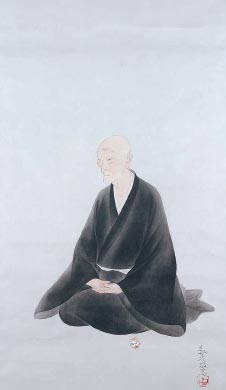

The first
Nobel prize-winning Japanese author Kawabata Yasunari (1899–1972)
referred to the Zen poet-priest Ryōkan (1758–1831) in his Nobel lecture
entitled Japan, the Beautiful and Myself and expressed the beautiful
sentiments towards nature that the Japanese have had since ancient times.
The Japanese painter Yasuda Yukihiko (1884–1978) perceived Ryōkan’s
character through his calligraphy and held a lifelong esteem for him. Both
Kawabata and Yasuda cherished Ryōkan’s calligraphy and early Japanese art.
They also shared an appreciation for the spirit that created such beauty.

This exhibition presents over 250 works—approximately eighty-five objects from the former Kawabata collection, approximately thirty-five objects from the former Yasuda collection, and approximately twenty calligraphic works by Ryōkan—including the National Treasures Ten Pleasures and Frozen Clouds and Sieved Snow, the Important Cultural Properties Portrait of Confucius and Ruguang Kiln Celadon Plate, and paintings by the celebrated artists Tawaraya Sōtatsu (act. early 17th century) and Ogata Kōrin (1658–1743). Explore the spirit that Kawabata and Yasuda shared through these works of art.
(Note that works will be rotated during the exhibition.)

This exhibition presents over 250 works—approximately eighty-five objects from the former Kawabata collection, approximately thirty-five objects from the former Yasuda collection, and approximately twenty calligraphic works by Ryōkan—including the National Treasures Ten Pleasures and Frozen Clouds and Sieved Snow, the Important Cultural Properties Portrait of Confucius and Ruguang Kiln Celadon Plate, and paintings by the celebrated artists Tawaraya Sōtatsu (act. early 17th century) and Ogata Kōrin (1658–1743). Explore the spirit that Kawabata and Yasuda shared through these works of art.
(Note that works will be rotated during the exhibition.)
And yet very similar is the deathbed poem of the priest Ryōkan (1758-1831):


The blossoms of spring,
The cuckoo in the hills,
The leaves of autumn.”
In this poem, as in
Dogen’s, the commonest of figures and the commonest of words are strung
together without hesitation-no, to particular effect, rather-and so they
transmit the very essence of Japan. And it is Ryōkan’s last poem that I have
quoted.
I saw it to a close, playing ball
With the children.”
The moon is clear
Together let us dance the night away,
in what is left of old age.”
of the world”
It is that I am better at the
pleasure enjoyed alone.”
Translated by Edward Seidenstiker